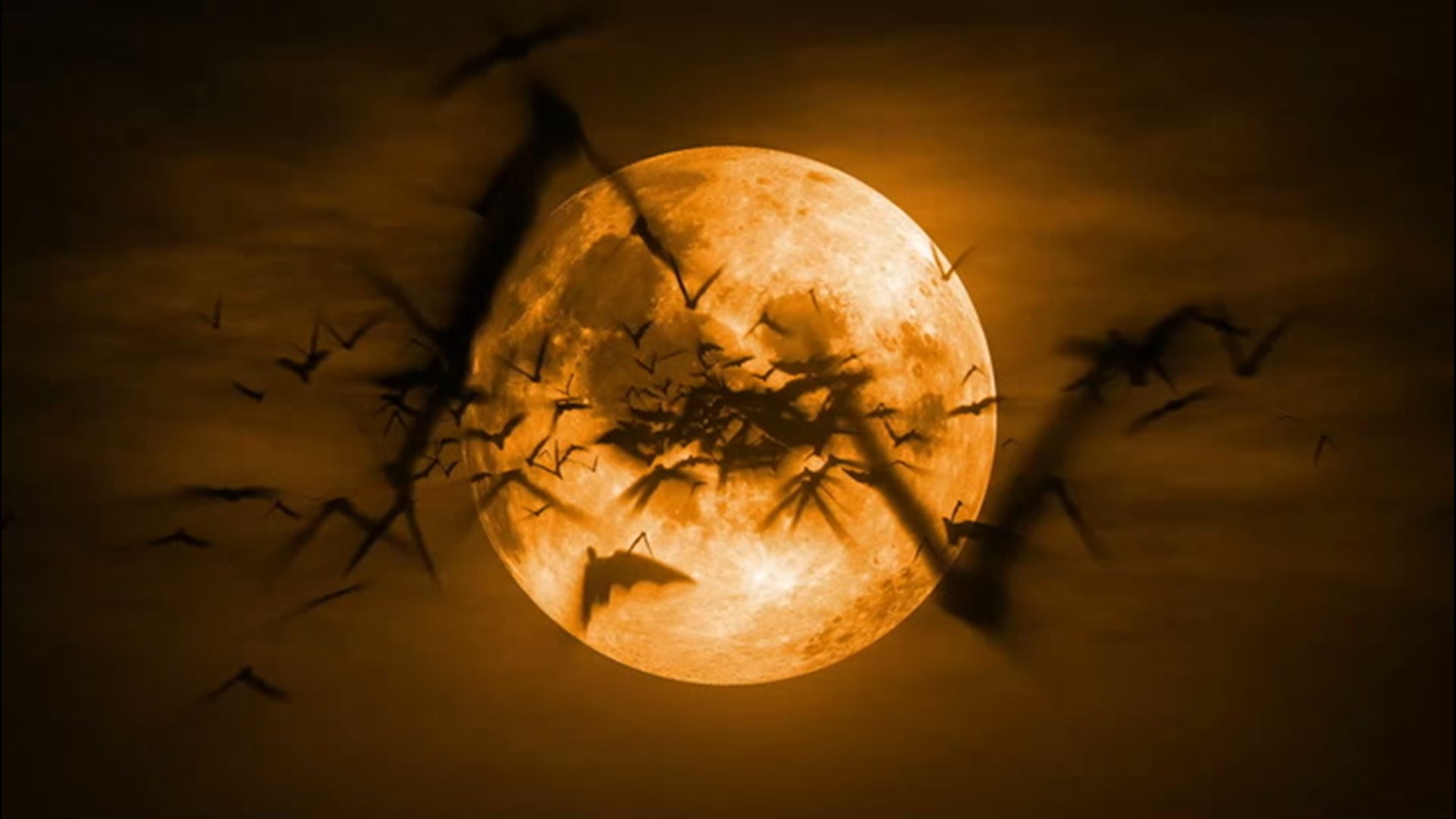The night sky will bring an added treat this Halloween as it features a spectacle that has not occurred in nearly two decades.
Halloween is shaping up much differently this year due to the coronavirus pandemic with some communities electing to cancel trick-or-treating to reduce the risk of the virus spreading from one household to another. But in neighborhoods where young masqueraders will be going door-to-door collecting candy, they will have a bright full moon to help light the way.
This won't be the typical full moon, either -- it will be a blue moon.
Contrary to its name, a blue moon does not appear blue in color. It is simply the nickname given to the second full moon in a calendar month. However, the moon can take on different colors such as orange and red when it is near the horizon, similar to how the sky can turn vibrant colors when the sun is near the horizon.
"The modern understanding of "Blue Moon" only took off in the 1980s. It was a result of a much earlier mistake printed in a 1946 issue of Sky & Telescope magazine, and since then, the term has gone viral in the media," the Old Farmer's Almanac explained.
The first full moon in October rose on the first of the month and was one of the most well-known full moons of the year: The Harvest Moon. The Harvest Moon is the nickname given to the full moon closest to the fall equinox and typically glows in September, but 2020 was one of the instances where it appeared in early October.
Blue moons like the one this month happen about once every two-and-a-half years, according to NASA. This irregularity is how the phrase "once in a blue moon" came to be.
Those who are superstitious may want to carry around a good luck charm on Oct. 31 and keep it handy with a Friday the 13th right around the corner in November.
The Halloween blue moon is being touted as a rare celestial event by some, leaving people to wonder how uncommon this event is compared to a typical blue moon.
"On average, the moon is full on Halloween every 19 years," NASA said. "In fact, every Halloween full moon is also a Blue Moon."
The last time that a full moon illuminated the sky on Halloween night was in 2001; however, clouds obscured the spooky sight for folks across the Northeast, the northern Plains and along the Interstate 5 corridor in the Pacific Northwest.
Trick-or-treaters this year may have kids of their own the next time that a blue moon falls on Halloween, which will happen in 2039.
Where cloud-free conditions prevail, there will be plenty more to see in the sky than just the moon.
Three bright planets will be visible after nightfall, including Mars off to the right of the moon and Jupiter and Saturn side-by-side in the southern sky.


Setting up a telescope and getting a good look at these planets could be a fun night for families that are not planning to trick-or-treat this year due to the pandemic, although no telescope is required to see the trio of planets.
Even looking at the moon through a telescope or simple pair of binoculars can reveal the countless craters that speckle the surface of Earth's natural satellite.
The second full moon in a calendar month is the most common definition for a blue moon, but there is another way for a full moon to qualify for this nickname.
Rather than looking at the number of full moons in a month, a blue moon can be found when looking at the number of full moons in a season. Typically, there will be three full moons every season, but that is not always the case.
"If a season instead has four full moons, then the third full moon (not the fourth) in the season may be called a Blue Moon," the Old Farmer's Almanac said.
Just like a calendrical blue moon, seasonal blue moons occur every few years with the next one set to rise on Aug. 22, 2021.
Since there are two types of blue moons, it is possible for there to be both a calendrical blue moon and a seasonal blue moon in the same year, but it will be another 17 years before stargazers get to see the celestial double feature.

